
The Sustainable Choice: Compostable and Biodegradable Paper Plates for Your Eco-Friendly Lifestyle
Introduction
In our growing awareness of environmental impact, choosing sustainable alternatives for everyday items has become paramount. Among these choices, eco-friendly paper plates stand out as a practical way to minimize our footprint. While various types of paper plates exist, compostable and biodegradable options have gained significant attention. But what exactly are they, and how do they differ? Let's explore the landscape of common paper plates and then delve into the distinct characteristics of compostable and biodegradable varieties.
Decoding Degradability: Compostable vs Biodegradable
 The terms biodegradable and compostable are often used interchangeably, yet they represent different levels of environmental responsibility. While all compostable materials are biodegradable, the reverse isn't always true. Biodegradable simply signifies a material's ability to decompose naturally through the action of microorganisms like bacteria and fungi, eventually returning to natural elements such as water, carbon dioxide, and biomass. However, the timeframe for this breakdown can vary drastically, from months to centuries, and it can occur in diverse environments, including landfills with limited conditions for rapid decomposition.
The terms biodegradable and compostable are often used interchangeably, yet they represent different levels of environmental responsibility. While all compostable materials are biodegradable, the reverse isn't always true. Biodegradable simply signifies a material's ability to decompose naturally through the action of microorganisms like bacteria and fungi, eventually returning to natural elements such as water, carbon dioxide, and biomass. However, the timeframe for this breakdown can vary drastically, from months to centuries, and it can occur in diverse environments, including landfills with limited conditions for rapid decomposition.
Compostable, on the other hand, carries a more specific and rigorous definition. Compostable materials are designed to break down completely within a defined timeframe under specific conditions found in composting environments, such as home compost piles or industrial composting facilities. This process typically occurs much faster, often within 180 days in industrial settings (at temperatures of 56-60°C) or within 360 days in home composting (at room temperatures of 20-30°C), with a requirement of over 90% decomposition in both scenarios. Furthermore, compostable materials must undergo safety testing to ensure the resulting compost doesn't harm plant growth or soil health. Think of compostability as a higher, more managed form of biodegradability, specifically aiming to produce beneficial, nutrient-rich compost (humus) that enhances soil quality.
From Plant to Recycled Paper Plates: The Environmentally Sound Origins

Both compostable and biodegradable paper plates offer significant environmental advantages over their traditional counterparts, particularly those with plastic coatings that hinder recycling and slow down degradation. Let's examine the materials behind these eco-friendly options and their positive impact:
Biodegradable Paper Plates are crafted from materials that naturally break down in the environment, primarily through microbial action. Common sources include:
● Recycled Paper: Utilizing post-consumer recycled paper reduces the demand for virgin wood pulp, conserving forests. While inherently biodegradable, the coatings used on recycled paper plates can affect the speed and completeness of their breakdown and may not always contribute to soil health if the coating isn't also biodegradable.
● Palm Leaves: Made from naturally shed palm leaves, these plates offer a rustic aesthetic and will eventually decompose. However, their breakdown rate might be slower compared to other materials, and they may not readily transform into nutrient-rich compost without specific composting conditions.
Compostable Paper Plates are specifically engineered to break down rapidly within composting systems, typically within 90 days, transforming into valuable soil-enhancing compost. Key materials include:
● Sugarcane Fiber (Bagasse): A resourceful byproduct of sugarcane processing, bagasse plates are fully compostable and decompose quickly in composting environments, yielding nutrient-rich compost that benefits soil fertility.
● Bamboo Pulp: Derived from fast-growing bamboo, these compostable plates are known for their sturdiness and efficient breakdown in composting settings, contributing to healthy soil regeneration upon decomposition.
Environmental Benefits Unveiled: Compared to conventional paper plates, which often incorporate non-recyclable plastic coatings and degrade slowly, both compostable and biodegradable options offer compelling environmental advantages:
 For Compostable Paper Plates:
For Compostable Paper Plates:
● Creating a Valuable Resource: Their decomposition yields nutrient-rich compost, a valuable resource that can improve soil health and reduce the need for synthetic fertilizers, effectively closing the loop in a circular economy.
● Diverting Waste from Landfills: Composting organic materials like these plates prevents their anaerobic decomposition in landfills, which releases methane, a potent greenhouse gas.
● Supporting a Circular Economy: By transforming waste into a useful resource, compostable plates contribute to a more sustainable and circular economic model.
For Biodegradable Paper Plates:
● Reducing Reliance on Fossil Fuels: Many are produced from renewable plant-based resources, lessening our dependence on fossil fuels used in traditional plastic production.
● Potentially Lowering Landfill Volume: Over time, their natural decomposition can contribute to a reduction in the overall volume of waste in landfills.
● Utilizing Sustainable Materials: Their production often supports more sustainable agricultural and manufacturing practices by utilizing plant-based resources.
● Generally Less Toxic Production: The manufacturing processes for biodegradable plates often involve fewer harmful chemicals compared to some plastic alternatives.
What Health Benefits Do Eco-Friendly Disposable Plates Offer?

Opting for compostable and biodegradable paper plates transcends mere environmental consciousness; it's a proactive step towards safeguarding your health and promoting safer practices. Here's a more comprehensive look at the multifaceted health and safety benefits they offer:
● Minimizing Exposure to Harmful Chemicals: Unlike many traditional plastic plates and even some conventional paper plates treated with synthetic coatings, eco-friendly alternatives often prioritize the use of natural, plant-based materials and avoid harsh chemicals, dyes, and adhesives. This significantly reduces the risk of these substances leaching into your food, particularly when serving hot meals or acidic dishes. By choosing compostable options, you're actively limiting your family's and your own exposure to potentially harmful compounds that could have long-term health implications.
● Embracing Naturally Derived, Safer Materials: The fundamental difference lies in the origin of the materials. Compostable and biodegradable plates are frequently crafted from renewable resources such as sugarcane pulp (bagasse), bamboo, palm leaves, or sustainably harvested wood fibers. This plant-based foundation inherently avoids the petroleum-based origins of plastic, which has raised concerns among scientists and health advocates regarding potential endocrine-disrupting chemicals like bisphenol A (BPA) and phthalates. By choosing these natural alternatives, you're opting for materials with a lower inherent risk profile.
● Upholding Stringent Food Safety Standards: Reputable manufacturers of compostable and biodegradable plates are committed to adhering to rigorous food safety regulations and certifications. This ensures that their products undergo thorough testing and meet established criteria for safe contact with food. These standards often encompass limits on heavy metals, migration of substances, and overall material purity, providing consumers with the assurance that the plates they use are safe for serving meals to their loved ones.
● Reducing the Risk of Microplastic Contamination: Traditional plastic plates, as they degrade over time (even if slowly in a landfill), can fragment into microscopic plastic particles known as microplastics. 1 These microplastics are increasingly recognized as a pervasive environmental contaminant and a potential health concern as they can be ingested. 2 Compostable and biodegradable plates, designed to break down naturally into non-toxic components, eliminate this risk of contributing to microplastic pollution and subsequent exposure through the food chain.
Discover the Jolly Chef Difference in Eco-Friendly Tableware
At Jolly Chef, we are committed to providing sustainable, high-quality tableware solutions that put your health and the planet first—without sacrificing convenience or style. Our compostable white & natural plates, made from plant-based materials like bagasse, offer a smooth touch and chemical-free goodness. Free from dyes and synthetic coatings, they retain their natural white color without bleeding into food, making them meal-friendly even for hot or acidic dishes.
 All of our eco-conscious paper plates are crafted from renewable resources, adhere to strict food safety standards, and are designed to decompose safely without leaving behind toxic residues. Choose Jolly Chef for your next meal and enjoy the peace of mind that comes with healthier, safer, and more sustainable dining—one plate at a time.
All of our eco-conscious paper plates are crafted from renewable resources, adhere to strict food safety standards, and are designed to decompose safely without leaving behind toxic residues. Choose Jolly Chef for your next meal and enjoy the peace of mind that comes with healthier, safer, and more sustainable dining—one plate at a time.


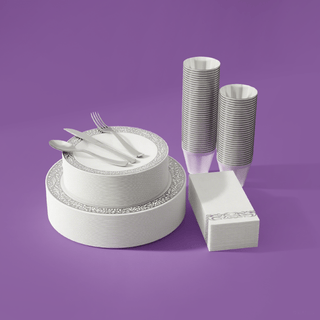
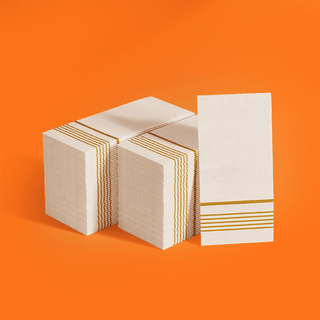




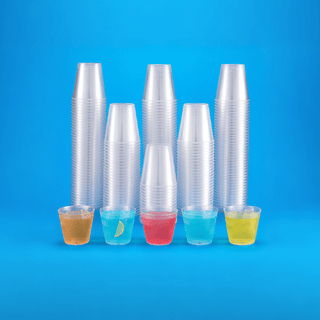
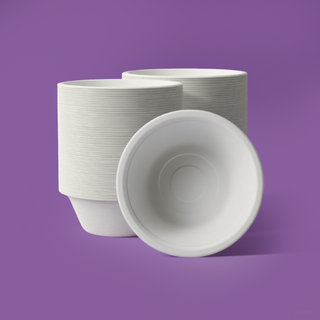




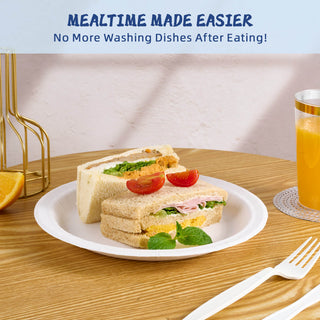

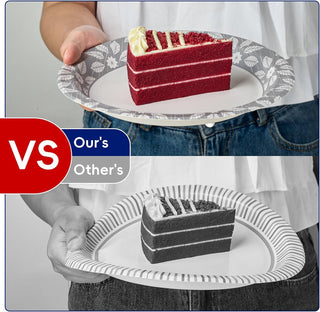
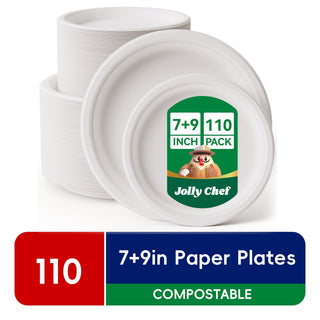
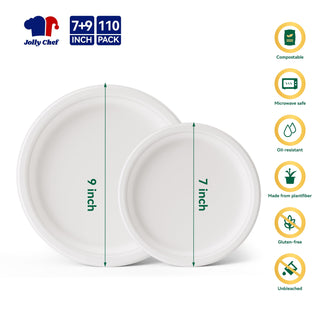
palm leaf
Such a timely and relevant read! It’s great to see more people recognizing the impact of single-use plastics and opting for compostable alternatives like biodegradable paper plates. These eco-friendly options are not just better for the planet, but they’re also convenient and stylish for gatherings, picnics, and events. I especially appreciate how this article highlights the difference between compostable and biodegradable—something that’s often misunderstood. For anyone looking to make small, meaningful changes in their lifestyle, switching to sustainable tableware is a fantastic place to start!
https://palmleaftableware.com/